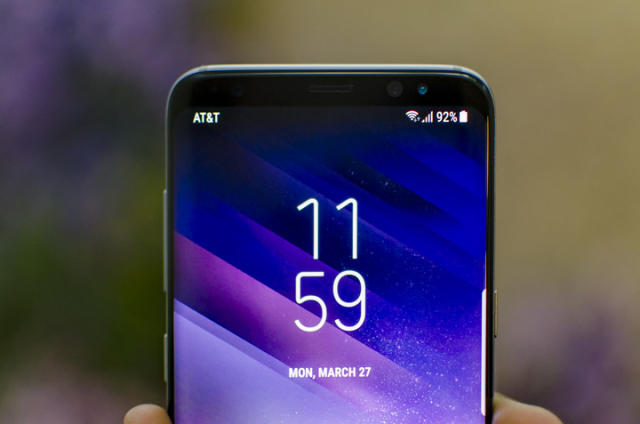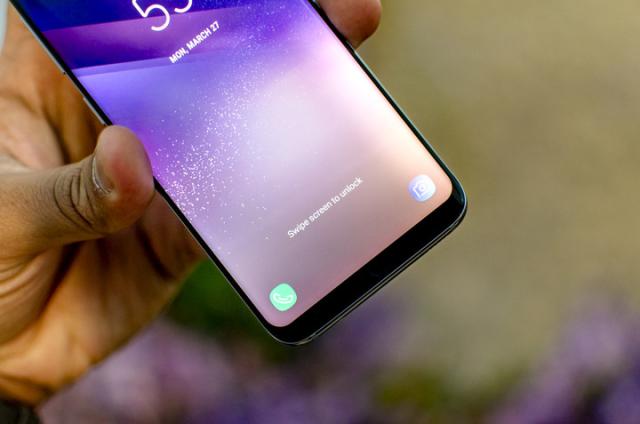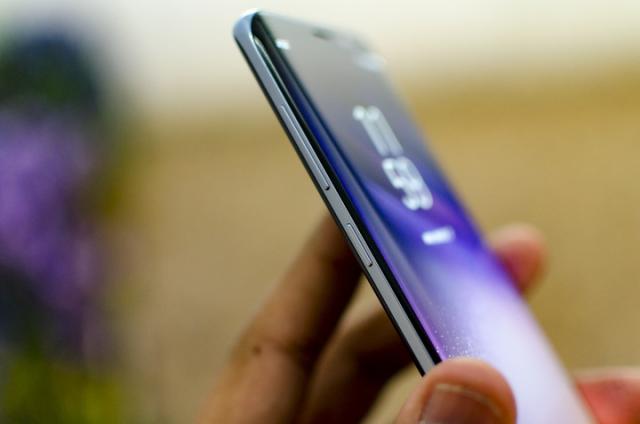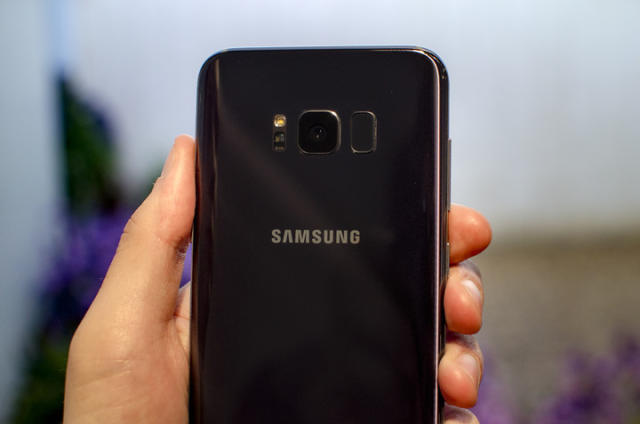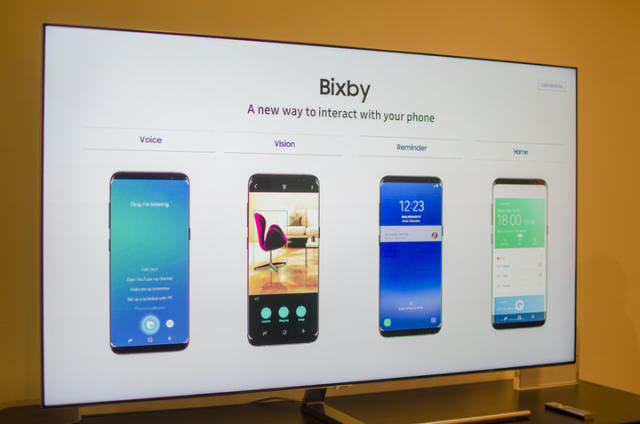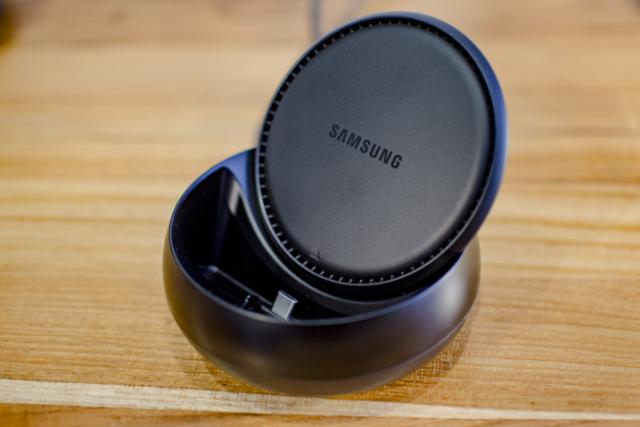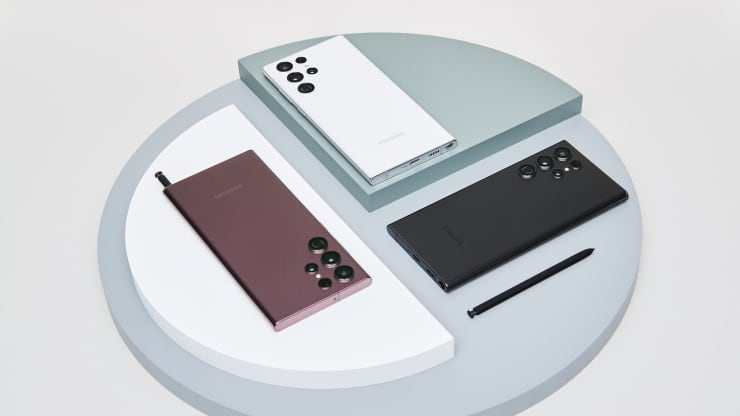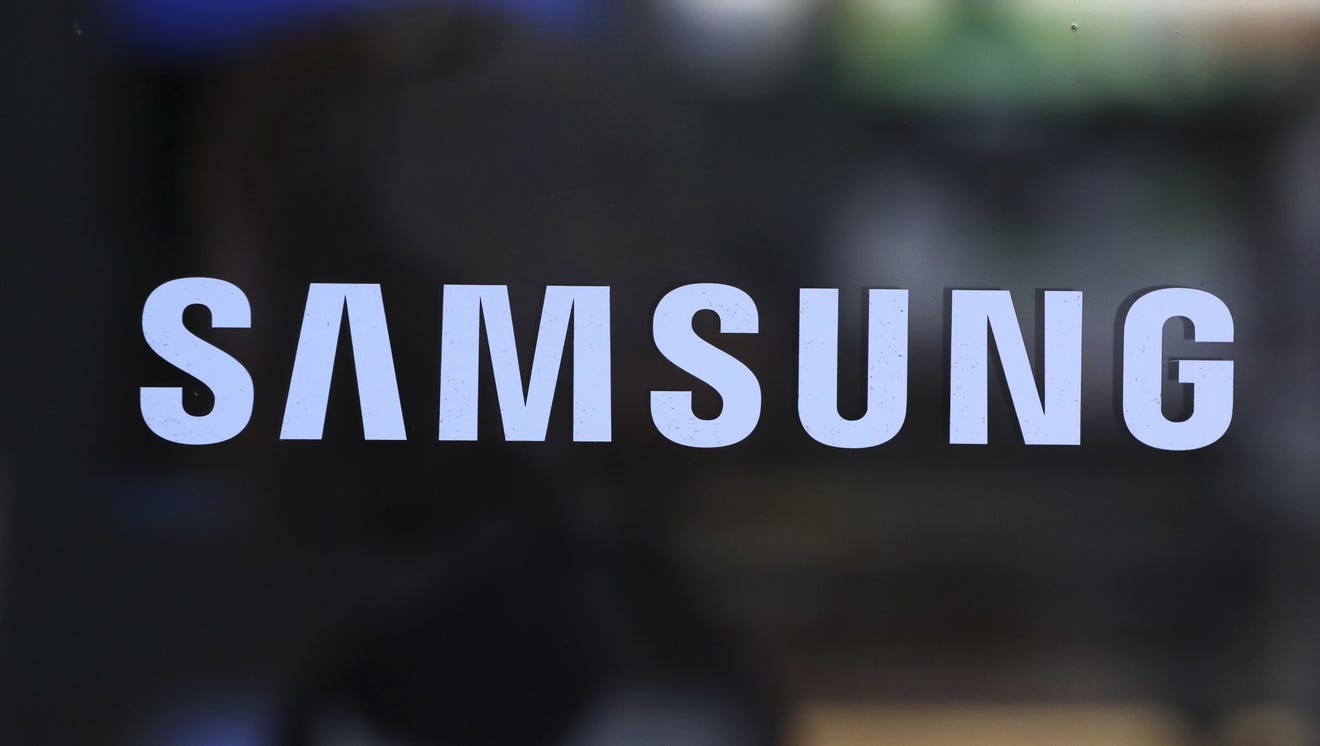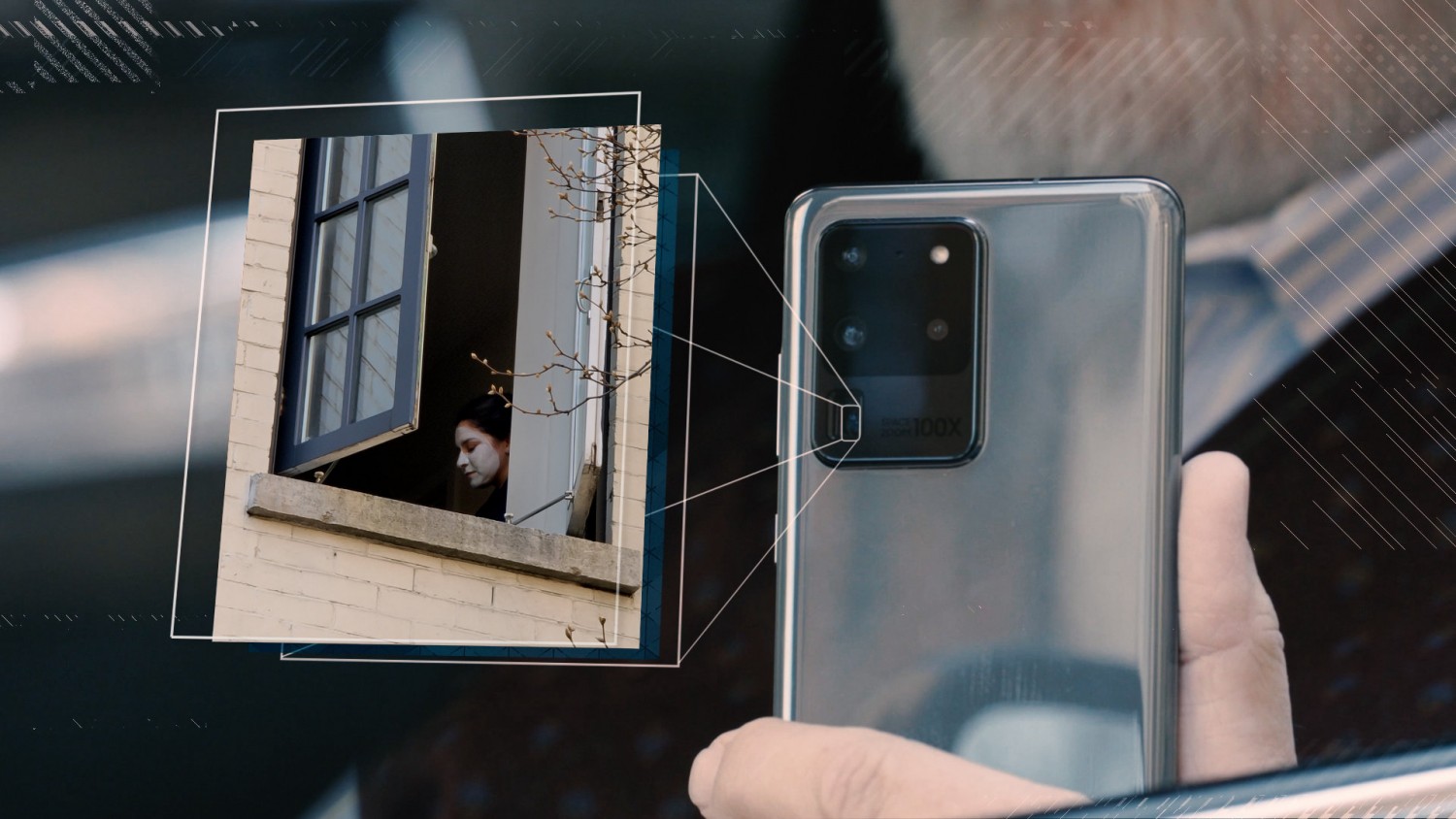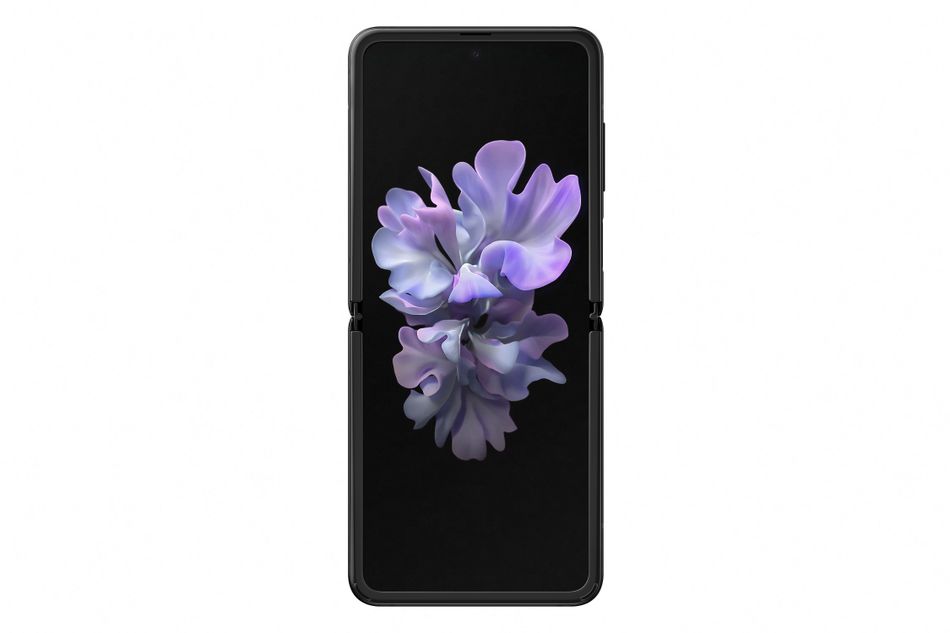This article is more than
7 year oldSamsung Galaxy S8 and S8 Plus: Our first take
This time last year, Samsung was riding high on its release of the Galaxy S7 and S7 Edge. It wasn’t the first “Edge” device Samsung released, but the phones were successful because they offered better use of the Edge display, while stylishly eliminating many of the Galaxy S6 Edge‘s pain points — like the lack of water-resistance and MicroSD card support.
Iterative improvements are what we see every year in smartphone upgrades, but Samsung’s trying to take it a step further in 2017. It’s not just about the smartphone anymore, but the smart products in our home, the desktop we work on, and how we interact with all these connected devices together. Bixby, a smart assistant, is Samsung’s answer. The assistant and this cohesive strategy can put Samsung at the top, because phones are just one of many products the South Korean giant makes and sells. There are smart fridges, smart TVs, smart lights, smart routers, and more.
The Galaxy S8 and the S8 Plus are Samsung’s first flagship smartphones since the ill-fated Galaxy Note 7, which the company had to recall due to a battery defect. You can read more here about how Samsung built the S8, and here to learn about its eight-point battery safety procedure.
Samsung has a lot riding on this phone, so let’s take a look at what it’s like to actually use an S8.
Ultra-slim bezels make one gorgeous smartphone
If you only look at the back of the Galaxy S8 or S8 Plus, you’ll be forgiven for mistaking it as the Galaxy S7 Edge — bar the “Galaxy S8” branding, the rear closely resembles its predecessors. Flip it around though, and it’s clear this isn’t the same phone. Samsung has gotten rid of the home button, and has opted instead for on-screen navigation icons.
Removing the home button allowed Samsung to slim the bezels as much as it could, and the end result is a gorgeous smartphone with a screen that covers 83 percent of the front panel. It also means the Galaxy S8 and S8 Plus feature 5.8-inch and 6.2-inch screens, respectively, with a 18.5:9 aspect ratio. That may sound as though the phones are huge, but the S8, for example, is more compact than most 5.5-inch devices. There’s no “Edge” variant anymore, because they both feature the Edge display.
It helps that Samsung also makes some of the best smartphone screens in the world. The Galaxy S8 and S8 Plus have the same Quad HD resolution at 2,960 x 1,440 pixels — the S8 packs 570 pixels-per-inch, while the S8 Plus has 529 ppi. The AMOLED Infinity Displays are crisp, vibrant, and colorful, and the bezel-less edge combined with ultra-thin bezels elsewhere allow for an immersive experience, especially when watching videos. What’s more, Samsung worked with the UHD (Ultra HD) Alliance to make sure its latest duo’s displays are premium HDR-compliant, meaning you can expect expanded color volume, far better contrast detail, and generally view content much close to what creators intended you to see.
More: Samsung’s latest Gear S3 concept would put a smart pocket watch in your waistcoat
The bezels on the top of the S8 house an array of sensors and the front-facing camera. On the left edge of the phone are the volume rocker and the Bixby button, which calls upon Samsung’s new AI assistant. On the right is the power button. So where’s the fingerprint sensor? Not under the glass as many had hoped. Rather, the S8 has a fingerprint sensor on the rear. It looks like a rounded rectangle, and it’s not in the center as you’d expect. It’s to the right of the camera, and this placement is worrying as we imagine users will end up tapping the camera glass more often than the sensor. We’ll have to see how this fares in day-to-day use.
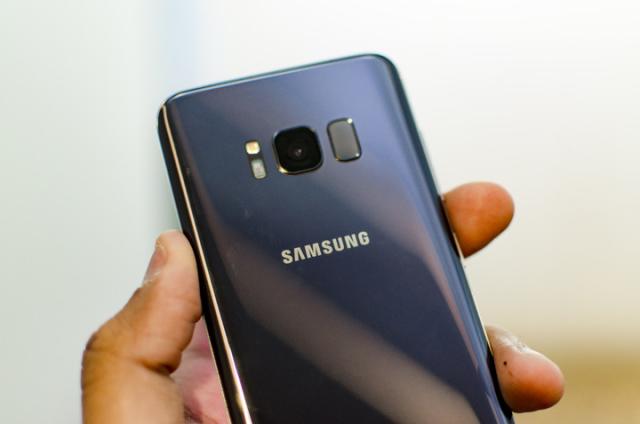
Julian Chokkattu/Digital Trends
On the bottom, you’ll find a USB-Type C port next to a — surprise, surprise — 3.5mm headphone jack. That’s right, Samsung didn’t blindly follow Apple.
The S8 and S8 Plus aren’t unwieldy, as they’re both ergonomic and comfortable in the hand (the S8 more so than the S8 Plus). The all-glass design means the phones are slippery, though, and they attract a hefty share of fingerprints. Everything is fairly flush on the back of the phone, which is hardly different from its predecessors — that doesn’t mean it’s any less sleek.
Zippy performance
Both the Galaxy S8 and S8 Plus will be the first smartphones available with Qualcomm’s Snapdragon 835 processor. International variants will use Samsung’s Exynos 9 Series 8895 processor, which offers comparable performance. Qualcomm said the Snapdragon 835 can deliver 27 percent better performance than the Snapdragon 821, but it will also be more energy efficient with a 40 percent reduction in power draw, and significant gains in battery life.
Other than size, there’s not much else different between the S8 and S8 Plus. Both have 4GB of RAM, and come with 64GB of internal storage. You can expand it to more than 256GB thanks to MicroSD card support.
Android 7.0 Nougat is the operating system, with TouchWiz layered over. Samsung’s Android skin has improved in performance and looks over the years, though you can still expect a sizable amount of pre-installed apps. Samsung has injected some unique features, such as how you can have an app float as a separate window in multitasking mode; as well as iris scanning and facial recognition technology, which provide more options in how you keep your smartphone secure.
Performance was speedy when we moved through apps, though we’ll have to test it more during our full review. We did notice a slight dip when we swiped left from the home screen to Bixby’s home page — akin to what we’ve seen on most smartphones when moving to the Google Now page.
More: South Korea finds Qualcomm prevented Samsung from selling chips to phone makers
The Galaxy S8 maintains its predecessor’s IP68 water-rating, meaning you can take it under 1 meter of water for about 30 minutes. It’s also the first phone to utilize the new Bluetooth 5.0 standard, which should offer four times the range of Bluetooth 4.2, as well as double the data transfer speed. You won’t get fast data transfer and increased range at the same time, though.
The 12-megapixel, f/1.7 rear camera hasn’t changed at all from the S7. It still features optical image stabilization, and any changes come via software optimizations. In our brief tests in a decently-lit indoor space, the Galaxy S8 didn’t perform as well as we’d hoped. Images were blurry with slight movement — you have to stay completely still to get a non-blurry shot in the light conditions we were in. We’ll test the camera more rigorously as we review the phone.
The front-facing camera has been upgraded from 5 megapixels to 8 megapixels with an aperture of f/1.7, so you can expect a slight bump in quality for selfies and “groufies.” The S8 also had some fun Snapchat-like stickers and emoji you could place and resize directly within the camera app itself, which may appeal to a young crowd.
As you can see, the Galaxy S8 offers iterative improvements over the Galaxy S7 — there’s nothing really groundbreaking here in the performance and camera department, but every small little upgrade can go a long way in advancing the overall experience.
The Bixby and SmartThings ecosystem
Samsung’s Galaxy S8 is crucial in its Internet of Things strategy, but it can’t do much without an intelligent assistant. That’s where Bixby comes in. Any actions you can perform by touch, you can do with voice thanks to Bixby — or so Samsung hopes — and the assistant is expected to make its way to Samsung’s other products. Unfortunately, a lot of what Bixby can do is restricted to “Bixby-supported” apps, which at the moment largely means Samsung apps.
Bixby has four main areas of focus: Bixby Home, Voice, Reminder, and Vision. Vision is by far the cooler feature, as it lets you trigger Bixby in Samsung’s camera app to start recognizing objects. It can read text and recognize images, and once it has identified a subject, it directs you to an Amazon shopping link in case you want to purchase what you’re looking at. You can also use this for translation, opening QR codes, and more.
Reminders is essentially a way to set and keep track of all your reminders, which you can trigger at a certain time or location (similar to Google’s Inbox app). Bixby Home is almost the same exact service as Google Now — swipe left from the home screen to see relevant “cards” like the weather, news stories, and more. It does go a step further with other personalized information that may be useful depending on where you are and what you frequently do at a certain time. For example, if you typically call your significant other after work, Bixby will learn this and will ask if you want to call your them when it recognizes you leaving work.
Bixby Voice utilizes the special button on the left of the S8, so you can use the assistant to perform actions you can do by touch — like sending a photo to a friend, or casting a video to a SmartThings-enabled TV. Alas, all of this works with Samsung’s apps and a few others, meaning Bixby may be a little less useful if you use other services. You can trigger the assistant with your voice by saying “Hey Bixby,” and if you don’t want to have the assistant speak out loud, you can put the S8 up to your ear and Bixby will talk through the earpiece.
Samsung will have an app called Connect pre-installed, and this will act like Apple’s HomeKit — you can control any SmartThings-enabled product here, set scenes, and more. Again, this plays to Samsung’s strength because it makes a lot of connected products.
We’re still unsure as to how useful Bixby Voice will be, as it really does rely too much on Samsung’s apps and the expectation that others will be quick to support the platform. We also didn’t get to test out voice functions because there was only one device with it enabled, and it’s unclear if that was because the assistant isn’t ready yet.
Will we use Bixby to perform actions we can do by touch? The experience has to be solid with broad app support, and it seems like that’s going to take time. If Bixby’s not for you, Google Assistant is also enabled on the smartphone so you can opt to use it instead.
DeX dock
Artificial intelligence aside, Samsung’s also trying to improve our smartphone productivity. While tablets still have a ways to go to replacing our laptops, Samsung is mimicking Microsoft Continuum with DeX, a dock that transforms any connected monitor into a Android workstation with a desktop user-interface.
DeX is a circular, thick puck that has cutouts on its rear for USB and HDMI ports. Connect it with an external monitor, keyboard, and mouse — then push the surface of DeX down, and it slides out as a kickstand for the S8. There’s a Type-C port that throws the S8’s desktop UI onto the monitor, and keeps your phone charged at the same time.
It all worked seamlessly in our demo, save for a few seconds of delay waiting for the desktop UI to pop up. Samsung said it tweaked the native freeform mode in Android Nougat and optimized it with its own apps. So with supported apps, you’ll be able to resize windows, use right-click functions, and generally have a more familiar desktop interface.
Samsung has worked with Microsoft to bring support for the Office Suite as well as with Adobe for its slew of Android apps. Citrix and VMware are also utilizing their apps so you can use a virtual version of Windows 10, while still having Android apps easily accessible.
All of this worked with hardly any performance hiccups. The downside though, like with Bixby, is that this works best with Samsung’s optimized apps. The company will have a developer program so anyone can add support, but it will likely be a slow process. Using non-supported apps, like Chrome, will be akin to how Android apps perform on Chromebooks — in a mobile-friendly format that doesn’t work as well on desktop.
It’s unlikely this will be a desktop replacement for most, but it’s the perfect tool for completing quick tasks if you have the workstation setup.
Price and availability
U.S. carriers have begun announcing pricing and availability for the Samsung Galaxy S8 and Galaxy S8 Plus. Here’s a quick look at pricing:
- T-Mobile: Galaxy S8 available for $750, Galaxy S8 Plus available for $850. Both phones available on April 21. Pre-orders open at midnight on March 30.
- Verizon: Galaxy S8 available for $720, Galaxy S8 Plus available for $840. Both phones available on April 21. Pre-orders open at midnight on March 30.
The phone will come with AKG earbuds that retail for $100, all thanks to the company’s recent acquisition of Harman.
The Galaxy S8 and S8 Plus are excellent smartphones that improve upon the Galaxy S7, but the real highlight is how we interact with other connected products around us. We have to be cautious in how useful Bixby and DeX will be, though, as Samsung has a long way to go in terms of app support.
Highs
- Vibrant, immersive display
- Sleek UI, futuristic design
- Snappy performance
- DeX is promising for productivity on Android
Lows
- Few Bixby-supported apps
- Blurry camera in low-light
Updated on 03-29-2017 by Christian de Looper: Added pricing and availability information.
Keywords
Newer articles
<p data-qa="subheadline">Lawmakers sped the proposal, the most significant threat to the popular app’s U.S. operations, by tying it to a sprawling funding package offering...
Ukraine war: Kyiv uses longer-range US missiles for first time
How soon could US ban TikTok after Congress approved bill?
TikTok faces US ban as bill set to be signed by Biden
‘LOSING CREDIBILITY’: Judge explodes at Trump lawyers as case heats up
Claim rapper ‘made staff watch her have sex’
KANYE WEST PLANS TO LAUNCH 'YEEZY PORN' ... Could Be Coming Soon!!!
Megan Thee Stallion’s Ex-Makeup Guru Talks. It’s Not Pretty.
Trump lawyer tells SCOTUS that president could have immunity after ordering military to assassinate a political rival
King’s Funeral Plans Dusted Off—as Health Remains a Mystery
